A compilation offering insight into some recent standout post-production work from the UK
Here’s a round-up of some of the best VFX, grading and post-production work on a selection of high-profile projects from the UK’s post-production sector.
Inside the World’s Toughest Prisons
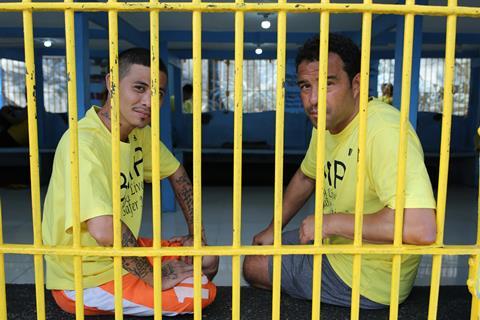
Production: Emporium Productions
Post-production: Clear Cut Pictures
Watch It: Netflix
Clear Cut Pictures recently delivered the fifth series of Emporium Productions’ Inside the World’s Toughest Prisons to Netflix.
The series transports the audience to experience prison life with presenter Raphael Rowe.
It offered creative opportunities for the team at Clear Cut in reproducing prison reality and the challenging environment the inmates face, using resonant sound design and intense colour grades.
Colourist Damion Katwaroo created a bespoke UHD grade for each programme on Baselight 2. The brief was to be slightly gritty so there was a focus on earthy tones with a touch of grain for sharpness.
This was then adapted to suit the character of each programme, reflecting the range of prisons and locations, from the icy but open environment of Greenland to the carnival colours of the overcrowded Manila City Jail.
The team adopted a DI workflow to meet Netflix’s enacting technical requirements. Initially the material was conformed directly to the Baselight and then shots were selected. Using the Baselight plug-in, shots were delivered to the online suite to be worked on in tandem with the grade.
Online editor Dan Preston worked on individual shots and frames, including applying extensive blurring, before passing the completed material back to Baselight for grade and finishing.
Dubbing mixer Nick Ashe led the audio team. The series was mixed on ProTools native in 5.1 and remixed for stereo.
Each of the prisons was very different in character, but also highly intimidating.
The brief was to elevate that feeling of being thrown into a harsh and claustrophobic environment, whilst giving the stories found in these places the sensitivity that they deserve.
Prisons are very noisy places and the unpredictable nature of this docuseries meant that the full toolkit was needed to give the dialogue clarity.
Almost every part of Izotope RX was utilised along with EQ-ing to clean up the dialogue, while the team got really creative using reverbs to give that oppressive feeling in the cells, which worked really well in the 5.1 mix.
Atmospheres and sound effects were layered up to give the films a much more immersive and cinematic feel.
Lockdown added an extra challenge as the team converted to a remote workflow. The technical team at Clear Cut put together a purpose-built remote recording kit so that Raphael Rowe could record his commentary from the safety of his home, while being recorded in the suite and overseen by the Director.
G2 Making The Squad – FIFA 21 Edition
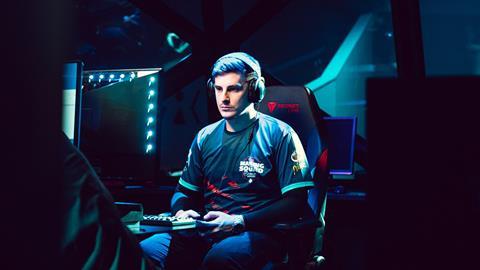
Production: Spark Content
Post-production: Envy
Watch It: Insight TV
This series focuses on what’s claimed to be the “world’s first esports reality competition.” 10 competitors endure physical challenges and go head-to-head in EA Sports FIFA 21 until a winner is crowned.
Dubbing mixer Rioch Fitzpatrick said: “For Making the Squad I was given a blank canvas and creative freedom to really help shape something special. With any production it’s important to understand the audience demographic, whether you’re working in audio or visuals. I started by watching the offline cut of the show to gain an understanding of the content and the target audience (generation Z and millennials). I understood the show to be high tempo and music driven, so I rode the music levels and in turn the FX a little higher than a slower paced ‘dialogue’ driven documentary. As always, a delicate balance is needed in the levels to prevent over compression.”
One challenge during the mix was to ensure all dialogue and pre-mixed audio was comprehensible. As with any production, background noise is unavoidable and will ultimately leak in to the post-production, so cleaning this up is vital in delivering a fantastic viewer experience.
Fitzpatrick said: “To refine the audio, I reduced as much of the unwanted noise as possible using ProTools alongside Izotope RX 8 Software and plugins. This workflow consisted of EQing, de-noising and dialogue isolation, with the latter being layered over the original audio and the collective process allowing the chosen audio to shine.
“An interesting element in the mix was I created both stereo and 5.1 surround mixes, meaning I had to carefully monitor the two to ensure consistency and that they played as intended. The capability of 5.1 allows for a more immersive experience so I wanted to be sure to deliver just that. I used ProTools to create dynamic and ambient sounds effects which I then embedded in to the episodes to cultivate the energy and atmosphere we desired. Throughout this process I worked closely with the production company and Insight TV, sending QuickTimes of potential name straps and effects both before and after embedding to make sure we created the correct vibe. Overall, we created a high-tempo captivating mix that complements the fast-paced content and really makes the show pop.”
Colourist Andrew Cloke added: “For G2: Making the Squad - FIFA 21 Edition, the brief was to give the show an extra push visually to make it stand out, while at the same time preventing any over stylisation or exaggeration that would detract from the show. This project was HLG HDR and 50fps, so we are working at one of the best specs in terms of visuals.
“For the series, I was grading with Baselight in ACES and I was using a custom-built LUT that I designed to work in high dynamic range colour spaces so that we can take advantage of the full tonal range available. I also used Baselight’s compress gamut tool to keep the more extreme lighting scenarios from clipping as they are converted into ACES, without losing the punch they originally had.
The content of the series is largely story driven, so it’s really important that we are not only producing something that looks stunning but at the same time isn’t distracting from the content itself.”
Dynasties (series 2)
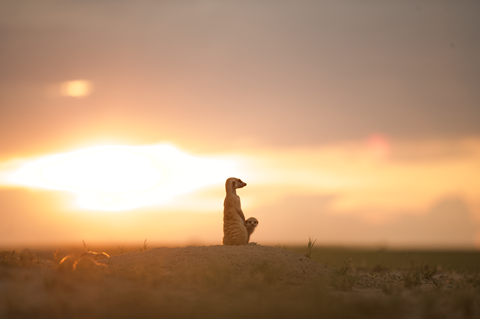
Production: BBC Studios Natural History Unit; BBC America; bilibili.
Post-production: Films@59
Watch It: BBC iPlayer
Each episode of BBC One’s Dynasties (series 2), narrated by Sir David Attenborough, is filmed in in one location and follows the drama of an individual group of animals, allowing the viewer to connect with the protagonist leader.
It follows them on the quest to keep their families safe and survive the challenging environments they call home.
The first episode focused on meerkats. Films@59 colourist Simon Bland said: “The filming and storytelling techniques, which are more likened to a drama, are a pleasure to work with, and allows for a more creative grade. The filming location for the meerkats’ episode threw up distinct challenges in post-production. The unforgiving dust storms and bleak environment made it harder to draw focus to the meerkats’ faces and expressions, which is crucial to the story.
“Concentrating the viewers’ attention on the meerkats eyes was one of the biggest challenges, but using mattes, keys and tracking shapes in the Baselight, I was able to maintain the emotion and intensify the expression in the animals.
“Enhancing the natural environment to add drama to the harsh lands further encourages the viewer to engage with the tough plight of the meerkats. Working in an ACES colour space and using all the raw metadata really helped the grade process. With such harsh sunlight reflecting on the salt plains, it enabled me to maintain highlight detail and also depth of texture and colour detail in the fur of the meerkats. On top of this, it also enabled grading HDR HLG 1000nits and create a flawless SDR trim.”
Perfect Planet
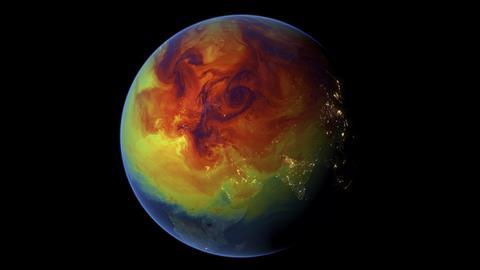

Production: Silverback Films
VFX: Moonraker VFX
Watch It: BBC iPlayer
Bristol VFX studio, Moonraker VFX, produced visual effects sequences for five-part series, Perfect Planet, for the BBC.
The series focuses on each of the Earth’s fragile forces – Oceans, Sunlight, Volcanoes and Weather – and culminates in an episode centred on humans.
Moonraker worked in collaboration with Silverback and the BBC to create a series of shots which show the Earth in never-before-seen detail, complementing the cinematography that’s seamlessly integrated within the body of the episodes.
This was achieved through the use of pioneering imagery, including shots from orbiting satellites. The shots were very detailed, with a ground resolution of up to 10m per pixel, enabling the viewer to clearly depict key geographical features from a great height.
Tom Downes, head of 3D at Moonraker, said: “With this project, we have been able to push the boundaries of the data available to us, using some of the most accurate images obtainable. By combining high-resolution elevation data with satellite imagery on the mapping space, we have been able to overlay both data sets to produce incredibly detailed shots.”
The use of shots filmed at an oblique angle, provides the audience with a perspective of Earth as if viewed from a plane window at 50,000ft. Simon Clarke, creative director at Moonraker, said: “Using the very latest hi-resolution satellite topography data and satellite imagery, we created a highly immersive cinematic view of our planet, taking the audience above the highest clouds to an altitude more typically associated with weather balloons.
“This sub-stratosphere view of our planet provided amazing textural detail, where the specific surface details of environments really become apparent to the viewer. This extra level of detail never seen before in Natural History filmmaking was critical to the storytelling, as so many of Earth’s global processes are unique because of our perfect position in relation to the Sun.”
Huw Cordey, series producer at Silverback Films, added: “The low Earth orbit shots were incredibly cutting edge and everything Moonraker VFX delivered sat seamlessly into the edits, perfectly complementing the cinematic scale of the photography”.
Bridgerton
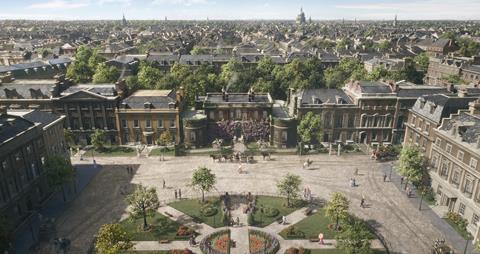
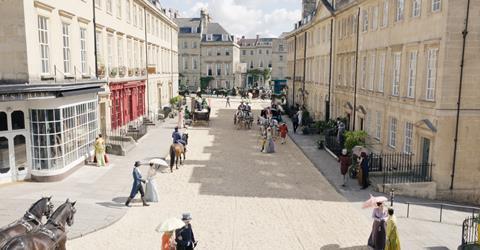
Production: Shondaland
Visual effects: One of Us
Watch It: Netflix
The architecture – interior and exterior – is more than just a backdrop to the story of the visually lavish Bridgerton. One of the key challenges faced by VFX supervisor Victor Tomi and his team was the accurate portrayal of the streets and buildings of Georgian London.
The two finest houses on Grosvenor Square are home to the two principal families.
Filmed at separate locations many miles apart, the goal was to bring the two buildings to face each other across the square.
The two family houses were modelled based on lidar scans of the originals, and then enhanced with embellishments and vegetation, adding to their grandeur.
Models of the other houses of the square were based on extensive research in consultation with the art department.
An ornamental garden, also fully CG, is the centrepiece of this exclusive neighbourhood. This digital environment provides many of the establishing shots which lead us into the competing households.
The show has a vivid palette and is lit throughout by the warmth of sunshine or candles. Having spent seven months on set, Tomi had a strong sense of the aesthetic that the creators were after. In collaboration with his team, he went all out to create visual effects that extended and enriched this Regency fantasy world and were in harmony with the visual tone of the show.
A bumble bee, animated by One Of Us, leads the viewer in and out of various key moments.
News of the World
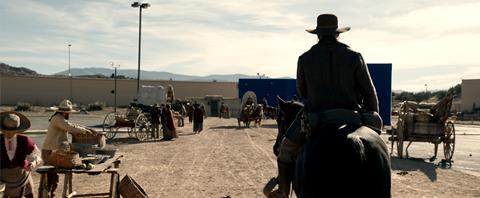
BEFORE
2021 Universal Studios. All Rights Reserved.
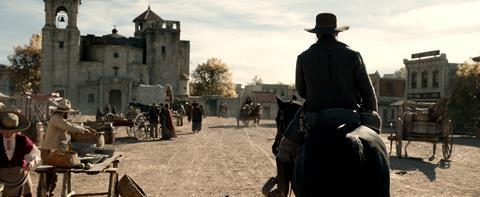
AFTER
2021 Universal Studios. All Rights Reserved.
Production: Universal Studios
VFX: Outpost VFX
Watch It: Netflix
As the primary vendor, Outpost VFX delivered more than 350 ‘invisible’ VFX shots for News of the World. Its contributions include world building, set extension, creatures, crowd replication, digital face replacement and complex FX simulations. Director Paul Greengrass is known for a realistic documentary style, so all the work had to sit seamlessly in the film.
Outpost VFX Supervisor Roni Rodrigues was asked by Greengrass and the production team to work with them client-side to deliver the film, starting with the shoot in New Mexico. Many of the film’s key locations, such as Red River, Dallas and Wichita Falls, were shot on the same set location with digital environments employed to turn this one bit of desert into three distinct Old West towns.
The design and layout of these towns, and additionally, the city of San Antonio, were based on genuine 1800s maps and illustrations in order to respect the history of the region and immerse the viewer in a believable vision of the Old West.
San Antonio’s plaza was shot in a casino car park with a few extras, blue screens and a thin strip of sand. These modest plates were transformed with VFX to feature creatures, more crowd, a marketplace, Old West buildings and a beautiful Spanish-style church.
The most demanding VFX work was required for a difficult night sequence next to a tempestuous river.
Supervised by Rodrigues and Outpost internal VFX supervisor Ian Fellows, the VFX team built a physics-based water simulation for the river. Establishing shots of the Kiowa tribe traversing the riverbank were fully CG, encompassing water simulation, CG riverbanks, CG foliage, dense cloud cover, atmosphere, rain and lightning flashes.
Visual effects for News of the World were delivered between December 2019 and September 2020, with the bulk of deliveries occurring during the first Covid-19 lockdown. Over 70% of VFX artists were sent home to work remotely. News of the World is one of the only major studio films to not be delayed due to the pandemic and deadlines for visual effects delivery remained unchanged, highlighting the adaptability and technological support required to deliver the film.
Rodrigues said: “My favourite sequence in the film is when Captain Kidd (Tom Hanks) arrives in San Antonio. I had to orchestrate a huge contribution between several departments for this sequence. We shot the whole sequence at a casino’s car park in New Mexico and thanks to working closely with set designers, wardrobe, light department and props, we managed to create an accurate layout of San Antonio as it was in the 19th century.”
Targeted: The Truth About Disability Hate Crime
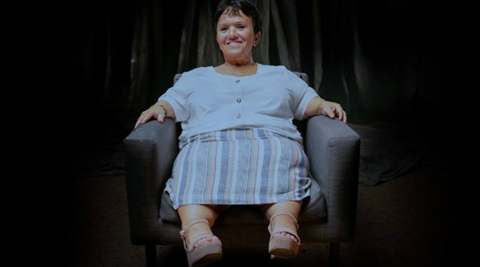
Production: Hardcash Productions
Post-production: Storm
Watch It: BBC iPlayer
This 60-minute BBC documentary, directed by Richard Butchins, reveals the abuse and aggression faced by disabled people in everyday life, from verbal name-calling to violent physical attacks.
Storm provided full end-to-end remote post-production, with the flexibility of having the editor and/or producer in at the facility when preferred. Storm used the remote access application Parsec for Teams, which seamlessly connects editors and producers to their edit suites and enables scalable control wherever in the world they are working from (with access to Storm’s shared network).
The team also used Storm’s browser-based Avid Editorial Management (Cloud UX) system, giving producers the ability to view & edit their rushes fully remotely. This was worked independently by multiple members of production with pulled clips syncing automatically with the offline.
The Audio Finishing was all handled remotely due to the lockdown, with the director being able to receive a live session link via Zoom, with a direct feed coming from the home studio desk output. Narration was also recorded using a combination of Source Elements plugins and Zoom.
A great deal of experimenting with looks was carried out throughout the grade, as well as during the offline too. A lot of the analogue deterioration effects available in DaVinci Resolve 17 were also used.
When it came to the review and sign-off, Storm had the ability to do this remotely via Parsec, inviting the team into suites on the fly. The director was provided a specially highly encoded live feed, coming directly from the online in full screen.
It’s a Sin
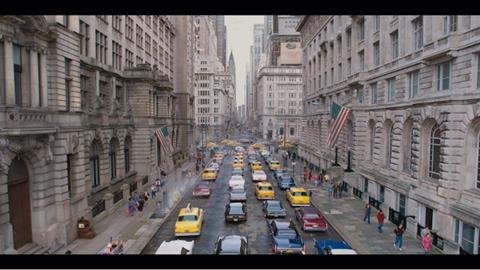
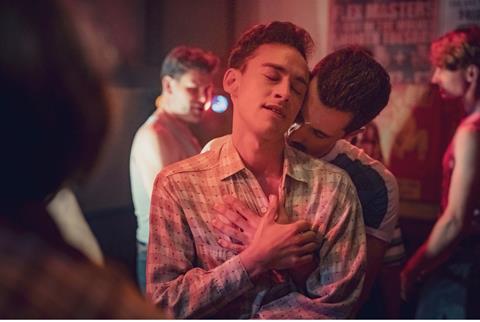
Production: Red Production Company
VFX: Technicolor
Watch It: All4
The 1980’s set series It’s A Sin explores friendship and love during the early years of the Aids crisis. Technicolor provided VFX and picture finishing for the series, working closely with executive producer Russel T Davies, producer Phil Collinson, director Peter Hoar and director of photography David Katznelson.
Technicolor VFX was the sole VFX vendor on the production, delivering 209 UHD shots with a focus on digital environment building to transport audiences back to the 1980s.
VFX executive producer Kate Warburton, said: “The creative brief was to make the shooting locations in modern day Manchester and Liverpool look like 1980’s London and New York. It was a great opportunity to build on our existing relationship with Phil, having previously worked with him on the period drama Gentleman Jack for the BBC and HBO.”
The Technicolor crew, led by VFX supervisor Nicholas Bennett, created a 1980’s period setting using a combination of 2D and CG VFX techniques, while combatting logistical challenges caused by the pandemic.
Bennett said: “We converted Liverpool into the busy streets of New York by adding subtle details to every frame. We added iconic New York buildings into the backdrop for the wide shots, as well as classic 1980’s advertising billboards, the American flag, and signature New York steam rising up from the subway. We also added CG traffic and crowds walking up and down the streets.
“Due to the pandemic, shooting plates on location became an impossibility when trying to create the main character Ritchie’s ferry journey from the Isle of White to London. Instead, we went full CG to build the sea and the boat – and used source photography of the Isle of White and added bird comps to make it look like a realistic voyage.”
London-based colourist Jodie Davidson and cinematographer David Katznelson collaborated for the first time on It’s A Sin. Katznelson said: “Grading during a pandemic was a new experience. Our first grading session was going to be a remote session – me at home with an iPad and Jodie in Soho. Having never worked together before, or even met in person, we were to grade five episodes over eight weeks.
“Ever since Peter Hoar and I talked to Jodie for the first time, from a recce (location scouting) bus in Manchester, we knew she was the right person for the job. She had the right energy and the right approach to the story. She is a brilliant collaborator and very visual. Within the first grading session she had gained my complete trust. When lockdown eased and I was able to go into Soho and sit by a proper monitor, seeing the image for the first time in HDR, I was blown away. It looked exactly like I had imagined – just better. All thanks to Jodie, who with a brilliant eye for detail, colour and contrast, had made It’s A Sin look amazing.”
The Serpent
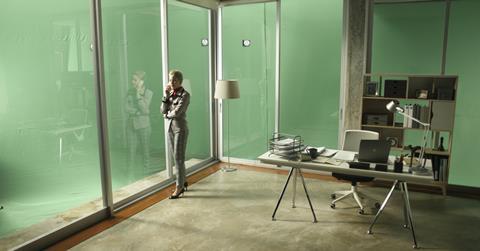
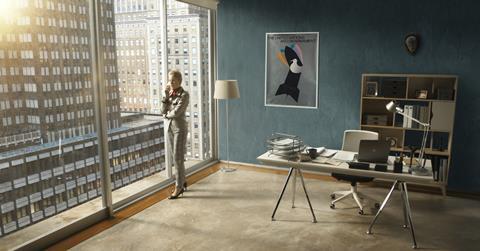
Production: Mammoth Screen
VFX: Vine FX
Watch It: BBC iPlayer
Vine FX delivered 500 shots for BBC eight-part drama The Serpent. It was filmed in Thailand and the UK and takes inspiration from real-life events of infamous French fraudster and serial killer Charles Sobhraj (Tahar Rahim).
As the main VFX vendor, Vine FX was involved in the project since early 2019. It’s their second collaboration after completing the critically acclaimed Patrick Melrose.
The pandemic had a direct impact on the international show, with cast and crew retreating from Thailand just eight days before filming was scheduled to end. Alternative UK based locations had to be secured in order to finish the final shots.
VFX Supervisor, Michael Illingworth assisted The Serpent team in recces throughout England to find suitable locations. Wrest Park Mansion (English Heritage) and Tring were in turn selected, with final days of filming scheduled, the production was back up and running.
Vine FX were tasked to create authentic set extensions, transporting the characters straight into the iconic streets of Paris, Kathmandu, Karachi, vast mountainous landscapes and historical temples.
Vehicles with green screen windows were used to authenticate landscapes, signifying the characters’ journey across borders and the passage of time.
Ezequiel Villanueva, head of 2D at Vine FX, supervised the delivery of the project. He said: “It was a 2- heavy show and our initial workload increased by a third as the scope of filming adapted with Covid-19. Historical accuracy was paramount throughout, and there was a particular focus on creating authentic locations and documentation such as the recreation of newspaper headlines to include our characters in real historical events, and the integration of documentary archive footage to the overall storyline”.
A non-linear timeline meant that character ageing needed to appear consistent throughout all shots, as filming was achieved using a mixture of 6K and standard definition cameras. Complications had to be overcome when blending the plates to different image resolutions, shots had to blend seamlessly with the fast-paced storyline spanning from the 1970s to early 2000s.
































No comments yet